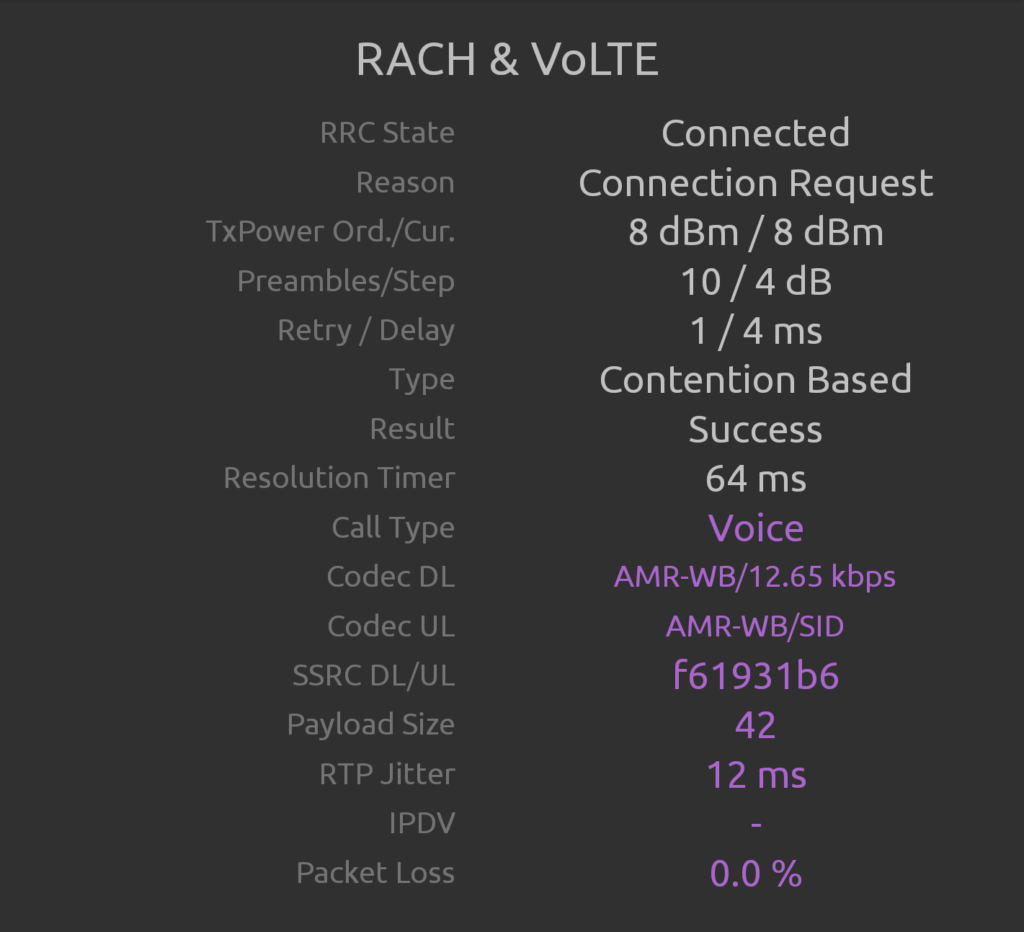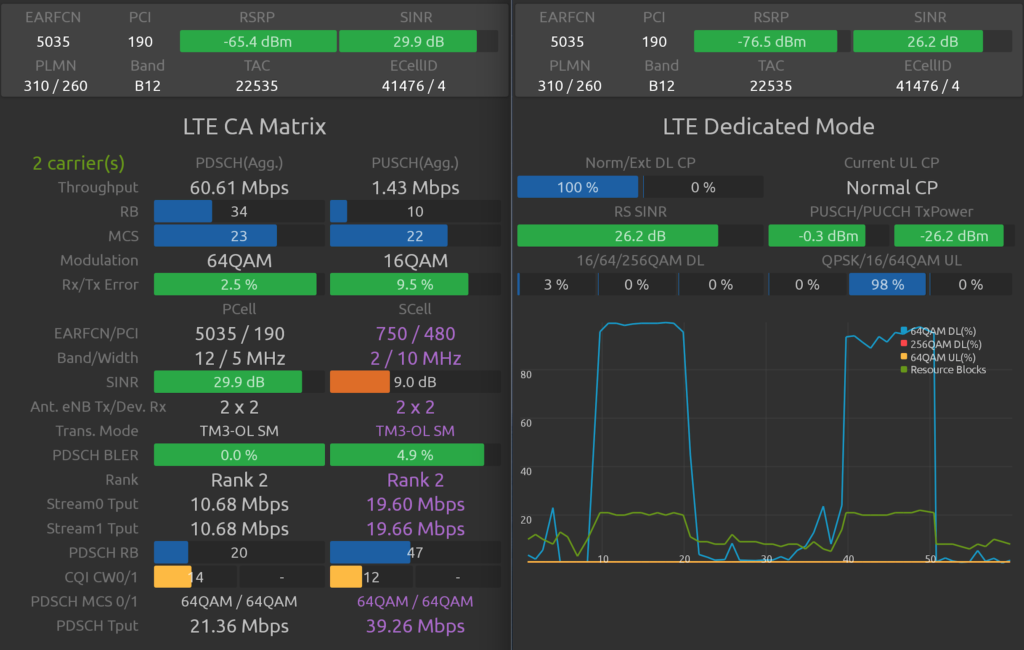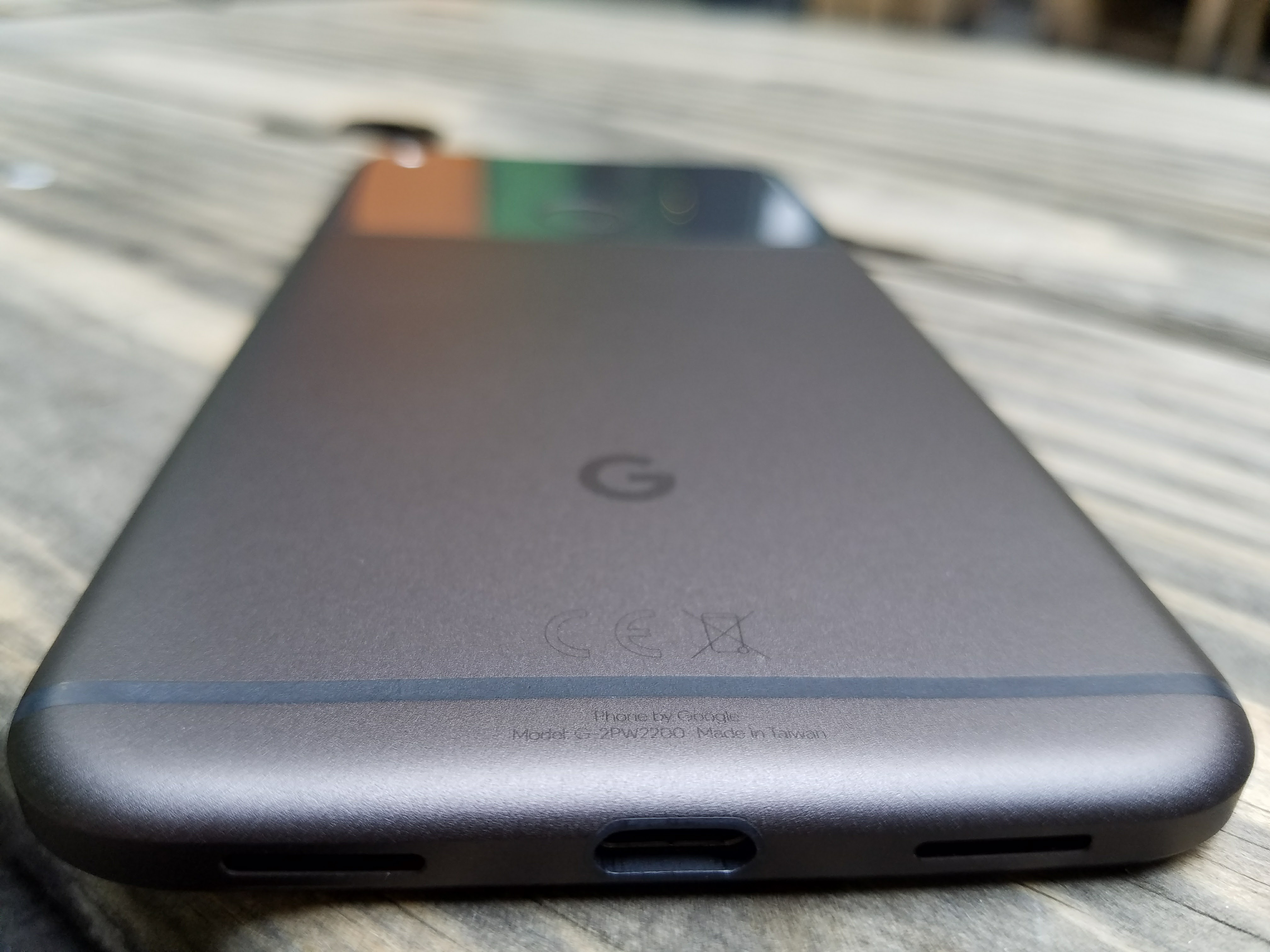Pixel XL, four months later
The Google Pixel has been one of the most celebrated smartphones of 2016. Four months after launch, Google’s latest flagship is still considered to be one of the best smartphones available on the market. For the past several months, we have been carrying the Google Pixel XL as one of our daily drivers, testing all four major operators, and collecting vast amounts of data.
In addition to field testing, we have done extensive lab testing utilizing state of the art Rohde & Schwarz CMWflexx setup for Over-the-Air (OTA) RF measurements.
Google ships two Pixel variants with distinct RF capabilities, one for the North American (NA) market and the other for the rest of the world (RoW). The NA variant can be purchased directly from Google, or through retail channels. While we genuinely enjoyed many features of the Google Pixel XL, we will focus on LTE Performance, which has seen no coverage in the press.
The Pixel XL is powered by Qualcomm’s Snapdragon 821 with the integrated X12 modem, and capable of downlink speeds up to 600Mbps. In order to achieve these peak speeds, the X12 modem utilizes two main LTE Advanced features: 3-Way Carrier Aggregation (3xCA) and Higher Order Modulation (256QAM).
The original Pixel XL spec sheet which has been taken down shortly after the launch reveals that the RoW Telstra variant ships as LTE Category (Cat) 11, while the NA variant was limited to LTE Cat 9. In other words this means that both variants ship with 3xCA support, while 256QAM capability is only available on the RoW Telstra variant.
![]()
Right out of the box, initiating a VoLTE or VoWiFi call on NA variant is as simple as inserting a T-Mobile or Verizon active SIM card into the device and no additional software update or toggling is required. Inspecting signaling messages reveals that Google has opted for Qualcomm’s native IMS client, likely to ensure the smooth handoffs between the LTE and Wi-Fi bearer, as well Enhanced Single Radio Voice Call Continuity (eSRVCC) for 3GPP legacy radio access technologies (RAT). In particular, we were impressed with T-Mobile’s handling of VoLTE <-> VoWiFi handoffs by Evolved Packed Data Gateway sitting at the edge of T-Mobile’s network core, where the typical click or a slight delay when switching between the two bearers wasn’t audible at all, to the point where we had to look through the signaling and SIP messages to verify that the handoff actually occurred. While Enhanced Voice Services (EVS) also known as Ultra HD Voice has been active on T-Mobile’s network for almost a year, as of right now AMR-WB is the only supported VoLTE/VoWiFi codec on the Google Pixel, and 12.65kbps has been the bitrate of choice on both U.S. operators. Voice calls on AT&T and Sprint are made over the legacy RAT.

Testing the device in the field always starts with our mandatory visits to “known good” local sites, where the network capabilities have been verified many times in the past and on many different devices. With NSG, the field testing software preloaded, we were able to observe the modem traces, which gave us all the insights on the negotiated link between the network and the device. Visiting our nearby AT&T and Verizon cell sites confirmed 3xCA (Cat 9) LTE capability of the device, but strangely the device would only negotiate 2xCA at the T-Mobile locations. To eliminate any potential network related issue, we compared the Pixel XL with the Samsung S7 Edge which instantly aggregated all three component carriers (Band 4, Band 12, Band 2). This prompted us to cut our day one field testing short, and make our way back to the lab so that we can further investigate this phenomenon. And just like during our field tests, when 310 260 (T-Mobile) test SIM is inserted into the Pixel XL and attached to a cell, the device reveals its LTE capability as Category 6, limited to 2xCA only. This behavior meant that despite the device being fully unlocked and (at least initially) marketed in North America as Cat 9 capable, Google exercises the right to enable and disable not only LTE bands and CA combos on “per operator” basis, but capabilities and features as well, such as LTE Category and Higher Order Modulation. We simply can not rationalize the reason behind this decision, but it is hard to imagine that this was an accident, knowing that T-Mobile is one of the very first U.S. operators to rollout 3xCA, as well as one of the first operators globally to activate DL-256QAM, UL-64QAM, EVS, etc. We are hoping that one of the upcoming Google OTA updates will take care of T-Mobile specific carrier profile, allowing the Pixel XL to take the full advantage of the network.


Since the very launch, Google has made it clear that the RoW variant, in particular the variant sold by Australian operator Telstra will have 256QAM (Cat 11) capability enabled, so we decided to pick one up to take it for a spin. Knowing that the international variant doesn’t ship with North American CA support, we were hopeful that at the very least we’d be able to test 256QAM feature on T-Mobile’s LTE network. Not only that the RoW Pixel XL variant failed to register 256QAM frames in the field, but it behaved similarly in the lab. We’ve used test SIMs from various U.S. operators including the default 001 01, with no success. That narrowed the testing down to one last option, and that meant getting a hold of a test SIM programmed with Telstra’s MCC MNC 505 01. To our relief, not only did the RoW variant attach to a 256QAM cell, but so did the NA variant, further cementing our theory that Google’s carrier profiles directly control the device capabilities independent of the hardware variant. We’ve seen quite a few OEMs in the past enabling or disabling LTE bands as a result of the SIM inserted, but to our knowledge this is the first time that an OEM has chosen to implement a software level control of advanced LTE features and capabilities. The good news is that the hardware itself is capable and we’ve verified it, DL-256QAM, UL-64QAM, and 3xCA is one simple software update away, and we truly hope that the upcoming monthly software update pushed out by Google will address this.

Like many times in the past we’re delighted to continue our collaboration with Rohde & Schwarz, the global leader in test and measurement equipment. Rohde & Schwarz has provided the CMWflexx test equipment consisting of two R&S CMW500 and one R&S CMWC controller, TS7124 RF Shielded Box equipped with four Vivaldi antennas for up to 4×4 MIMO, ensuring high reproducibility of OTA MIMO measurements, and their invaluable engineering support. Cellular Insights takes full responsibility for the analysis, findings, and opinions in this report.

Consistent with our previous reviews, our focus has been measuring the highest achievable LTE throughput in clean channel state, starting at RSRP value of -85dBm, and incrementally reducing radiated power level while maintaining Block Error Rate (BLER) under 2%. This allows us to measure RF sensitivity of the device under test while eliminating inter-cell interference and fully controlling the radiated environment. This also allows for high reproducibility and consistency of our tests, and takes into account the performance of the entire RFFE subsystem. We’ve spent countless days finding the “sweet spot” for each band within the shielded box, calibrating the system, and testing and comparing all publicly available Pixel XL software versions, since October 2016.
Like in our previous studies, we’ve tested three NA unique frequency bands Band 12 (10MHz), Band 4 (20MHz), and Band 7 (20MHz) in 2×2 MIMO configuration using Transmission Mode 4. Device supports downlink 256QAM and uplink 64QAM with Telstra SIM, and can process two data layers for 2×2 MIMO operation. Since Telstra SIM disables Band 4 and Band 12 capability of the Pixel XL, we were only able to test 256QAM on Band 7. Telstra is the very first mobile operator to commercially launch Gigabit Class LTE Network, and we very much look forward to testing their network soon.
Band 12 being the common North American low frequency band is crucial for indoor and rural coverage. We have tested 10MHz wide FDD channel, which translates to peak data rates of 75Mbps. At -96dBm the throughput dips by 10%, and by -105dBm the sustained data rates are at about 50%. At -124dBm, BLER becomes unmanageable.

LTE Band 4, together with Band 2, is the most commonly deployed mid-band spectrum in North America, and its propagation characteristics strike the perfect balance between the coverage layer and the capacity layer. Operators like Verizon and T-Mobile use their 20MHz wide licenses to deliver the highest amount of traffic on their networks. Even though the throughput starts to dip slightly sooner, the Pixel XL Band 4 performance is on par with the iPhone 7 with X12 modem. We’ve also encountered no issues in the field.

Band 7 being a high frequency band, is used in Canada, but also common in Australia and Europe. Since Telstra test SIM unlocks Band 7 as well as DL-256QAM, we were able to test the full capability of the device, and it shows. The Pixel XL performed admirably, reaching peak speeds of 195Mbps at the cell center, with usable speeds even at -124dBm.

For comparison we are adding Band 4 edge of cell performance chart

Google Pixel XL is an outstanding smartphone, and Google’s unadulterated software and unmatched services deliver arguably the best user experience on any Android smartphone. RF performance is solid, although we can not understand Google’s decision to disable Higher Order Modulation or 3xCA for some operators. We do hope that this year’s Pixel will include four receive antenna design for 4×4 MIMO, DL-256QAM/UL-64QAM, EVS, LTE-U/LAA, HPUE, Gigabit Class LTE, etc.
If you’re a true Android enthusiast, this is still the phone to get.

Luis • 7 years ago
It'd be better if we could actually buy one ...
replyGordon Lutz • 7 years ago
Pretty sweet phone!! Got mine right away, and love it.
replyChris K • 7 years ago
I bought a Pixel to replace my Moto X pure edition, so far it's amazing, and I really like the 5" screen I can hold on one hand.
replyCameron Hierstein • 7 years ago
Same here, but the sound and camera can't compare, so far...
replyÉric • 7 years ago
HTC 10 is better Anandtech and other have LTE issues with google pixels
replyI'm laughing • 7 years ago
Now that's funny
replyJoseph G • 7 years ago
Great phone, but they eliminated the Miracast capabilities so I can't mirror my phone to my Android Radio anymore. I really hope they fix this issue. All other phones still have that capability even my older phone from 2 years ago.
replyDavid Norris • 7 years ago
Chrome cast is good for that.
replyBart • 7 years ago
Yes it is, but does that not seem like a silly work around? Why should I have to get a 3rd Google device to make the first two talk to each other as intended, especially when other phones do it just fine? I will wait before buying an audio chromecast. Hopefully they'll add this feature back. I am not impressed with my gen 1 chromecast at all.
replyMark B • 7 years ago
Had mine now for 2 months. Love it.
replyRobert Henderson • 7 years ago
I have a Nexus 6p. As soon as they shrunk down the screen, took away the front facing speakers and left the huge bezels, it was dead to me.
replyMaureen • 7 years ago
. After two cracked S7 edge screens and 1/2 dozen screen protectors I realized we were not a good match. So I go a really blue pixel XL in Dec and I really like this phone. It just works. I put a zizo bolt case on it and it has kept it intact.
replyJay • 7 years ago
4+ months on the waiting list that never notified me of the 128GB black XL ever coming back in Stock!?? Sorry Google, if you can't get me a phone in the order I signed up to get one, it looks like I'll stick with Apple. At least they can make enough phones and prioritize those who asked for one months ago!!! Epic supply FAIL Google! Now that I have had 4+ months to reconsider, I'm glad I dind settle for a Pixel that has no wireless charging, no water resistance, and poor speakers. Sorry, you had a chance to hit it out of the park and bring me back to Google....This didn't help do that, it did the exact opposite.
replyDavid Glossop • 7 years ago
Xl is still a low tech piece of shit. Buggy. Hangs. Updates cause more bugs. Like the alarm stop working.
replyPhil • 7 years ago
Haven't had any of those issues on mine. It hangs occasionally but I'm running the 7.1.2 Beta so that's understandable. But when I compare it to other phones, it's so smooth and much less buy that phones by other OEMs.
replyAnonymous • 7 years ago
Don't blame the technology of you are too dumb to use it.
replyAnthony • 7 years ago
I have the really blue pixel this phone rocks. Buy this phone and put a screen protector on it and a case. After that, fasten your seat belt and enjoy your Pixel Android voyage!!
replyBart • 7 years ago
I have those on mine too, but it always bums me out on the occasions where I take it out of the case. The standalone product feels so good to hold on its own that it's a shame to put a case on it.
replyVivan Shah • 7 years ago
Thanks for your detailed dive into the Sim-specific LTE characteristics of the phone. Lets hope that google updates the Pixel to support advanced LTE features on t-mobile.
replyCoolHandz • 7 years ago
Really would be nice if they would work with AT&T so we could get VoLTE working on either this Pixel or the next one.
replykdupreez • 7 years ago
And Naively forgets to mention the battery problems that have been plaguing Google Pixel owners...
replyMichDui • 7 years ago
Best device out there. I know as I have had them all! Note 7 may have been able to top it, but that went down in flames. Let's see how the S8+ compared.
replyPei • 7 years ago
nice article. seems Pixel is not as good as said.
replyFred • 7 years ago
Have had mine Pixel for 2 months now. Had to buy it in Germany, cause here in Sweden it's not launched (will probably never either). BUT I'm really satisfied with the Pixel and looking forward to Pixel 2. I'm sure Google will improve the delivery situation and then slowly crush Apple :-)
replyMilind Desai • 7 years ago
I have bought the Pixel XL and it has been an outstanding performer. The display and camera have been simply superb. I should say I am one of the very few proud owners of the Pixel XL in my circle.
replyJames David Carter • 7 years ago
I got my pixel XL on the release date and was very impressed with it till yesterday. I woke up and the phone had 9 updates to install. After the install I restarted it and it got stuck in a boot loop. The local Verizon store could not fix it so they overnighted a refurbished one. After 3 hours of downloading from the cloud and updates I'm back in business. Thank God I paid for insurance on this device. Let's hope it's not a regular problem for anyone else.
replyBrian • 7 years ago
I have a Pixel I can't wait to replace it. I didn't like this phone...........
replyJessup • 7 years ago
Check this out: https://youtu.be/04YWalKBgVw
replyWatkins • 7 years ago
They don't tell you that this phone is not compatible to car Bluetooth for text messages if I knew before I bought I wouldn't bought it Google don't tell you or Verizon I'm very unhappy with this can it be fixed
replyJonathan Church • 7 years ago
Can you post an update on whether or not the 3xCA issue has been resolved by Google? Thanks for the excellent write-up!
replyCstark • 7 years ago
3xCA is enabled on the O DP3 beta, and flashing it's baseband to 7.1.2 updates enables 3xCA there, as well. Hoping for 256qam support soon.
replyAzlun • 7 years ago
You are Test Expert !!
replyAndrew • 7 years ago
Have I pixel XL. Just switched from Verizon to Sprint on one year free promotion. They failed to tell me they don't support Wi-Fi calling on the pixel
replyAbdullah • 7 years ago
Excellent article.. thanks
reply